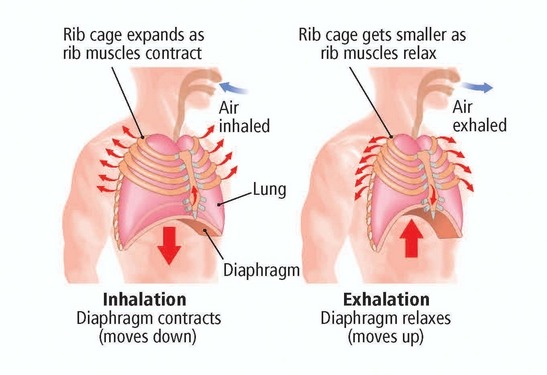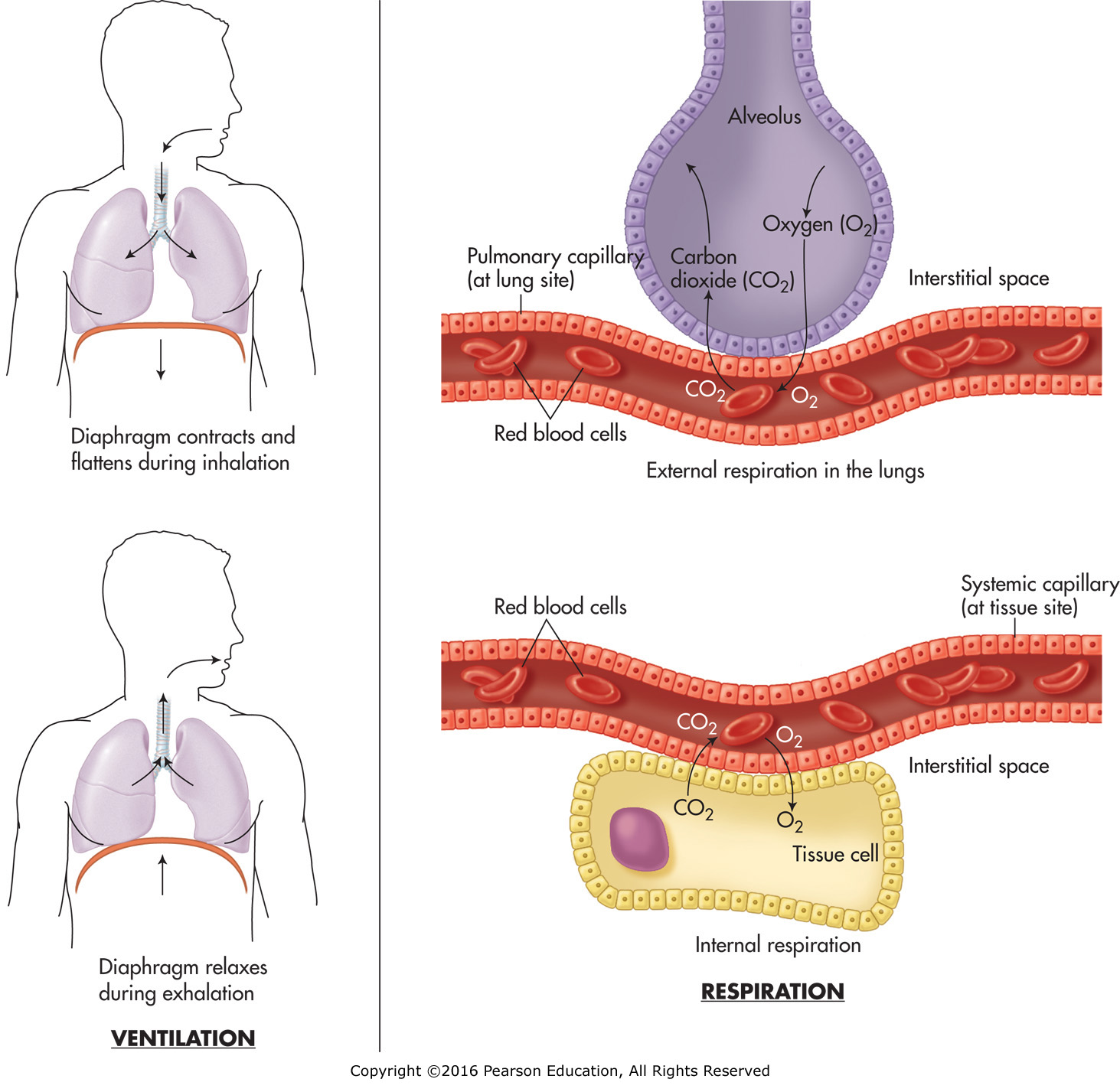Respiratory System Mechanics

Normal respiration rates for an adult person at rest range from 12 to 16 breaths per minute.
The Mechanics of RespirationThe Lungs and the Respiratory System allow us to Breathe
- RESPIRATION: The exchange of oxygen and carbon dioxide.
- VENTILATION: the mechanical moving of air in and out of the lungs (plus diffusion and perfusion)
RESPIRATION
We breathe OXYGEN in (inspiration) and CARBON DIOXIDE out (expiration)
Inspiration: which is the expansion of the chest with a negative intrapulmonary pressure when air flows into the lungs.
Expiration: when the intrapulmonary pressure is higher than the atmosphere, air will flow out of the lungs.
The transfer of oxygen from the outside air to the blood flowing through the lungs requires:
Ventilation is the process by which air moves in and out of the lungs.
Diffusion is the movement of gases from high to low concentration (without the use of any energy or effort by the body) from the alveoli to the capillaries in the lungs.
Perfusion is the process by which blood provides nutrients and removes cellular waste from organs and tissue in the body.
DIFFERENT TYPES OF BREATHING
Quiet breathing: also known as eupnea, is a mode of breathing that occurs at rest and does not require thinking (automatic). During quiet breathing, the diaphragm and external intercostals must contract.
Forced breathing: also known as hyperpnea, is a mode of breathing that can occur during exercise or actions that require the active manipulation of breathing, such as singing.
During forced breathing, inspiration and expiration both occur due to muscle contractions. In addition to the contraction of the diaphragm and intercostal muscles, other accessory muscles must also contract.
INTERNAL vs EXTERNAL RESPIRATION

External Respiration is the exchange of gases with the externally connected tissue specifically; occurring in the alveoli of the lungs.
Internal Respiration is the exchange of gases within the internally connected tissue, specifically; occurring in the capillaries and cells.
Involuntary respiration is not under conscious control
The region of the brain that controls many involuntary and metabolic functions is located in the upper area of the brainstem.
The medulla oblongata is the primary respiratory control center. Its main function is to send signals to the muscles that control respiration to cause breathing to occur.
The pons is the other respiratory center and is located underneath the medulla. Its main function is to control the rate or speed of involuntary respiration.
Chemoreceptors detect the levels of carbon dioxide in the blood by monitoring the concentrations of hydrogen ions in the blood.
MOVEMENT OF THE THORAX
THE PLEURA of the LUNGS
The pleura includes two thin layers of tissue that protect and cushion the lungs:
- The inner layer (visceral pleura) wraps around the lungs and is stuck so tightly to the lungs that it cannot be peeled off.
- The outer layer (parietal pleura) lines the inside of the chest wall.
- The very thin space between the layers is called the pleural cavity.
- A liquid, called pleural fluid, lubricates the pleural cavity so that the two layers of pleural tissue can slide against each other.
Inhalation:
The DIAGHRAGM is triggered to contract. It pushes down on the abdominal cavity and the thus increasing the volume of the lungs.
An increase in volume causes a decrease in pressure (known as Boyle's Law).
Go to Gas Exchange Page LINK once you are done reading here!
Exhalation:
The DIAGHRAGM is signaled to stop contracting. It goes back into position and this decreases the volume of the lungs.